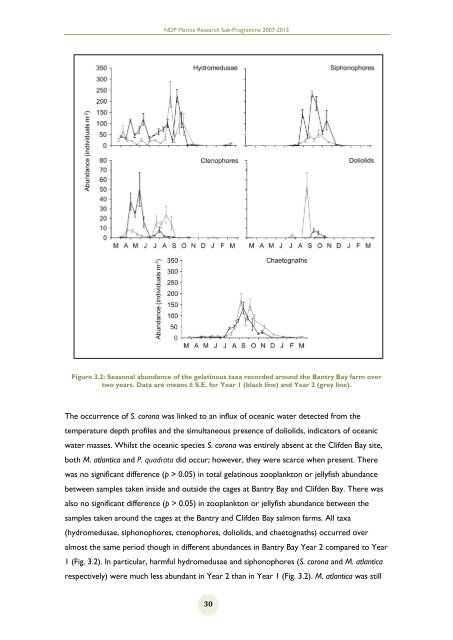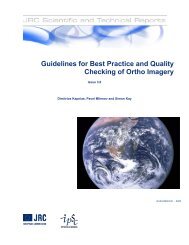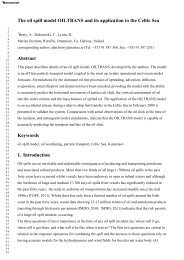No. 12. GILPAT.pdf - Marine Institute Open Access Repository
No. 12. GILPAT.pdf - Marine Institute Open Access Repository
No. 12. GILPAT.pdf - Marine Institute Open Access Repository
Create successful ePaper yourself
Turn your PDF publications into a flip-book with our unique Google optimized e-Paper software.
NDP <strong>Marine</strong> Research Sub-Programme 2007-2013Figure 3.2: Seasonal abundance of the gelatinous taxa recorded around the Bantry Bay farm overtwo years. Data are means ± S.E. for Year 1 (black line) and Year 2 (grey line).The occurrence of S. corona was linked to an influx of oceanic water detected from thetemperature depth profiles and the simultaneous presence of doliolids, indicators of oceanicwater masses. Whilst the oceanic species S. corona was entirely absent at the Clifden Bay site,both M. atlantica and P. quadrata did occur; however, they were scarce when present. Therewas no significant difference (p > 0.05) in total gelatinous zooplankton or jellyfish abundancebetween samples taken inside and outside the cages at Bantry Bay and Clifden Bay. There wasalso no significant difference (p > 0.05) in zooplankton or jellyfish abundance between thesamples taken around the cages at the Bantry and Clifden Bay salmon farms. All taxa(hydromedusae, siphonophores, ctenophores, doliolids, and chaetognaths) occurred overalmost the same period though in different abundances in Bantry Bay Year 2 compared to Year1 (Fig. 3.2). In particular, harmful hydromedusae and siphonophores (S. corona and M. atlanticarespectively) were much less abundant in Year 2 than in Year 1 (Fig. 3.2). M. atlantica was still30
















